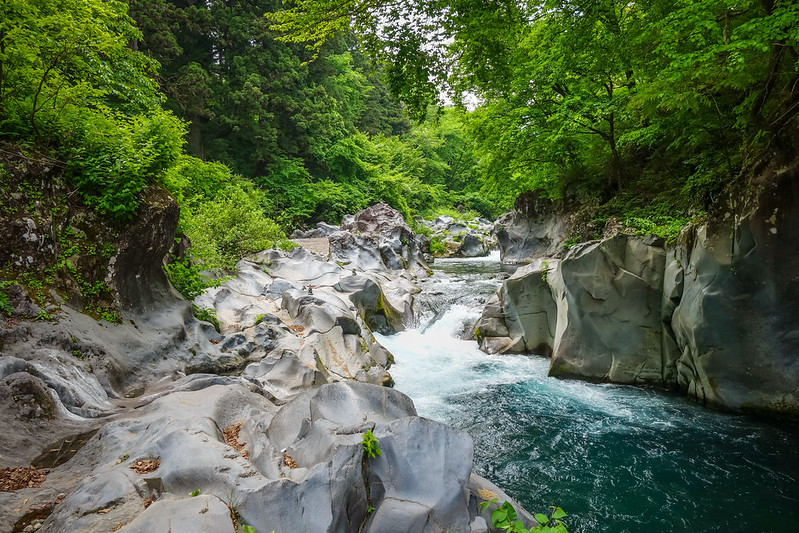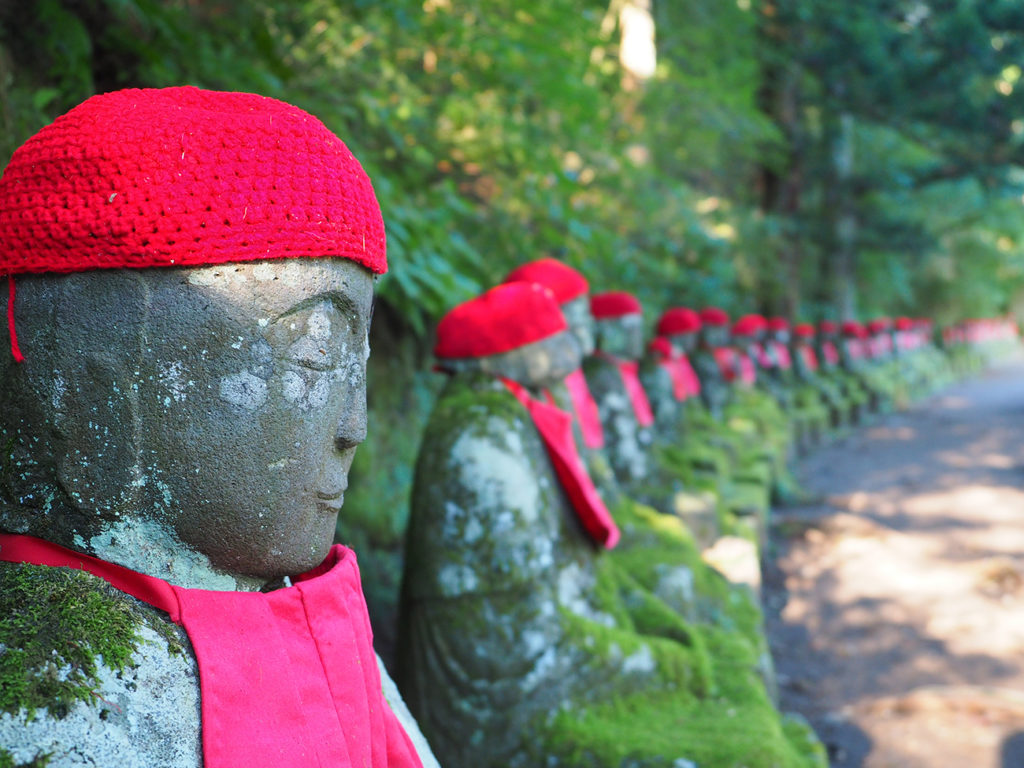
The Kanmangafuchi Abyss
To the north of Japan lies a gorge created from a tremendous volcanic eruption of the nearby Mount Nantai, about 7,000 years ago. The gorge is located close to central Nikko and is known as the Kanmangafuchi Abyss. It has beautiful views of the surrounding area and Daiyagawa River is by the picturesque path.
Jizo at Kanmangafuchi Abyss.
Adding to the allure of the Kanmangafuchi Abyss is the 70 or so stone Bake Jizō or Ghost Jizō statues all in a row. The statues line the path overlooking the Nikko Botanical Garden. According to local legend, these Jizō statues disappear like ghosts and are never in the same spot. It is next to impossible to have the same count of number of statues if one would even dare try.
Jizōs represent the enlightened being, Ksitigarbha Bodhisattva (Jizō Bosatsu, 地蔵菩薩) who is revered primarily in East Asian Buddhism. Jizo Bosatsu is mostly depicted as a Buddhist monk. His name means Earth Stone, Earth Treasury, Earth Womb, or Earth Matrix.
In Japan, Jizō, or Ojizō-sama is one of the most loved among the Japanese divinities. Jizō statues are a common sight all around Japan especially in graveyards and roadsides. Japanese tradition sees Jizō as the guardian of children and children who have passed on before their parents.
Kanmangafuchi Abyss.
Jizō is also worshipped as the guardian of mizuko (souls of miscarried, stillborn or aborted fetuses). Japanese believe that souls of children who die before their parents are unable to cross the mythical Sanzu River on their way to the afterlife because they have not accumulated enough good deeds and for making their parents suffer. The souls of the children perpetually pile stones on the banks of the river as penance. Many place piles of pebble and stone beside Jizō statues to help shorten the time the children have to suffer in the underworld as in the tradition of building stupas, mound-like structures, as an act of merit making in Buddhist belief. Jizō is also know to be the protective deity of travelers and firefighters.
The Kanmangafuchi Abyss makes for an extraordinary landscape with an interesting backdrop of a story. When walking along the trail, try counting the Jizō statues and say a little prayer for the children and travelers alike. Perhaps even try making a pile of pebbles or stones to shorten the time of the lost souls of children in the underworld.


